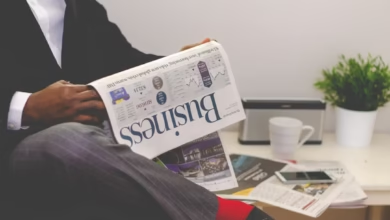Understanding Inflation: Key Causes and Policies Shaping Economic Trends in 2024

**Introduction: Understanding the Causes of Inflation**
Inflation is a complex economic phenomenon that affects every aspect of our daily lives, from the prices we pay for groceries to the interest rates on our loans. As the cost of living continues to rise globally, understanding the various causes of inflation becomes crucial for individuals, businesses, and policymakers alike. This article delves into the primary drivers of inflation, including demand-pull and cost-push dynamics, examining how these factors interact to influence economic growth and stability.
We will explore monetary and fiscal policy's pivotal role in shaping inflation trends, revealing how central banks and government spending decisions can either exacerbate or alleviate inflationary pressures. Additionally, we will analyze essential inflation metrics such as the Consumer Price Index (CPI) and Producer Price Index (PPI), identifying current global inflation trends that highlight the impact of wage inflation, supply chain disruptions, and fluctuating energy and food prices.
By the end of this article, you will gain a comprehensive understanding of the multifaceted causes of inflation, enabling you to make informed decisions about inflation-proof investments and better manage your retirement savings amidst the backdrop of an ever-changing economic landscape. Join us as we unpack the layers of inflation and uncover strategies to navigate its challenges effectively.
- 1. **Understanding the Causes of Inflation: Demand-Pull vs. Cost-Push Dynamics**
- *(Explore the primary drivers of inflation, including demand-pull factors and cost-push pressures, and how they impact the economy.)*
- 2. **Monetary Policy and Fiscal Policy: Their Role in Shaping Inflation Trends**
1. **Understanding the Causes of Inflation: Demand-Pull vs. Cost-Push Dynamics**
Inflation is a complex economic phenomenon influenced by various factors, primarily categorized into two main types: demand-pull and cost-push inflation. Understanding these dynamics is crucial for policymakers, businesses, and consumers alike as they navigate the ever-changing economic landscape.
**Demand-pull inflation** occurs when the demand for goods and services exceeds their supply. This imbalance can arise from increased consumer spending, government expenditure, or investment by businesses. During periods of economic growth, rising incomes can lead to heightened demand, pushing prices up. For instance, when central banks lower interest rates, borrowing becomes cheaper, stimulating spending and investment, which can contribute to inflation. Notably, inflation expectations play a significant role here; if consumers anticipate rising prices, they are likely to spend more now, further exacerbating demand-pull dynamics.
Conversely, **cost-push inflation** is driven by rising production costs, which can stem from supply chain disruptions, increased energy prices, or wage inflation. For example, when the cost of raw materials rises—whether due to geopolitical tensions or natural disasters—producers may pass these costs onto consumers, resulting in higher prices. Additionally, labor shortages can lead to increased wages, further contributing to the overall cost of living and inflation metrics like the Consumer Price Index (CPI) and Producer Price Index (PPI). In extreme cases, persistent cost-push inflation can lead to stagflation, where high inflation coincides with stagnant economic growth and rising unemployment.
Understanding these two types of inflation is essential for developing effective **monetary policy** and **fiscal policy** strategies. Central banks often respond to inflation trends by adjusting interest rates, aiming to balance economic growth with price stability. On the other hand, fiscal policies may focus on government spending and taxation to influence economic activity.
In recent years, global inflation trends have also been impacted by external factors, such as currency devaluation and international supply chain issues. For instance, the COVID-19 pandemic highlighted vulnerabilities in global supply chains, resulting in significant disruptions that drove up costs for many goods. Additionally, fluctuations in energy and food prices can have immediate effects on the cost of living, affecting households and their **retirement savings**.
As investors seek to protect their assets from inflation, inflation-proof investments, such as real estate and digital currencies, have gained popularity. Moreover, inflation hedging strategies are essential for safeguarding wealth against rising prices, especially during periods of hyperinflation or disinflation.
In summary, understanding the causes of inflation—demand-pull vs. cost-push dynamics—enables a nuanced view of economic health and informs strategies for managing inflation expectations, ensuring sustainable economic growth while maintaining price stability.
*(Explore the primary drivers of inflation, including demand-pull factors and cost-push pressures, and how they impact the economy.)*
Inflation is a complex economic phenomenon influenced by various factors that can significantly impact the overall economy. Understanding the primary drivers of inflation is crucial to grasping its implications on everyday life, such as the cost of living and purchasing power.
One major component of inflation is **demand-pull inflation**, which occurs when the demand for goods and services exceeds their supply. This type of inflation often arises during periods of economic growth when consumers and businesses have higher disposable incomes. As demand surges, companies may struggle to keep up, leading to increased prices. This type of inflation is particularly evident in sectors experiencing rapid growth, such as technology and real estate, where **wage inflation** and rising energy prices can further exacerbate the situation.
On the other hand, **cost-push inflation** emerges when the costs of production increase, causing producers to raise prices to maintain profit margins. Factors contributing to cost-push inflation include supply chain disruptions, rising energy prices, and escalating food prices. For instance, when energy prices spike due to geopolitical tensions or natural disasters, it raises transportation and manufacturing costs, which are ultimately passed on to consumers. Furthermore, currency devaluation can also play a significant role in amplifying cost-push pressures, as imported goods become more expensive.
Both demand-pull and cost-push factors can lead to broader economic concerns like **stagflation**, a situation marked by stagnant economic growth combined with high inflation and unemployment rates. Conversely, when inflation rates drop significantly, it can lead to **disinflation**, which may signal an economic slowdown. Central banks and policymakers often monitor inflation metrics, such as the Consumer Price Index (CPI) and Producer Price Index (PPI), to assess and adjust monetary and fiscal policy accordingly.
In response to rising inflation expectations, central banks may increase interest rates to cool off an overheating economy. However, this can have implications for **inflation and debt**, as higher interest rates can increase borrowing costs for individuals and businesses. As such, understanding inflation trends is essential for making informed decisions about investments, including **inflation-proof investments** like real estate or digital currencies, which can act as a hedge against rising prices.
In summary, the causes of inflation, including demand-pull and cost-push factors, play a critical role in shaping economic growth and the financial landscape. By staying informed about **global inflation trends** and the underlying drivers, individuals can better navigate the complexities of inflation and make sound financial choices, including retirement savings and inflation hedging strategies.
2. **Monetary Policy and Fiscal Policy: Their Role in Shaping Inflation Trends**
Monetary policy and fiscal policy play crucial roles in shaping inflation trends, influencing not only the cost of living but also overall economic stability. Understanding how these two policies interact can shed light on the various causes of inflation and the types of inflation that emerge in different economic contexts.
Monetary policy, primarily implemented by central banks, involves managing interest rates and controlling the money supply to achieve macroeconomic objectives such as price stability and economic growth. For instance, when central banks lower interest rates, it tends to increase consumer spending and investment, which can lead to demand-pull inflation. Conversely, if inflation expectations rise, central banks may tighten monetary policy by raising interest rates to dampen excessive demand, thus preventing hyperinflation or stagflation—a situation characterized by stagnant economic growth alongside high inflation.
Fiscal policy, on the other hand, pertains to government spending and taxation decisions. Increased government expenditure can stimulate economic activity, potentially leading to wage inflation as demand for labor rises. However, if this spending is not matched by revenue, it can lead to currency devaluation and a further rise in inflation. The interplay between fiscal policy and inflation metrics, such as the Consumer Price Index (CPI) and Producer Price Index (PPI), is crucial for understanding inflation trends.
Both monetary and fiscal policies must consider external factors, such as supply chain disruptions and fluctuations in energy and food prices, which can exacerbate inflationary pressures. For example, rising energy prices can increase production costs, leading to cost-push inflation, while disruptions in the supply chain may contribute to longer-term inflation trends.
In the current global economic climate, where inflation expectations are on the rise, policymakers must be vigilant. Indices measuring inflation can provide insights into the effectiveness of their strategies, prompting adjustments to ensure that inflation remains manageable. Additionally, as we observe trends in inflation hedging, such as investments in real estate or digital currencies, it becomes evident that both monetary and fiscal policies will need to adapt to changing economic realities.
In summary, the relationship between monetary policy, fiscal policy, and inflation is complex yet vital for understanding the causes of inflation and navigating inflation-proof investments. By monitoring inflation trends and implementing effective strategies, policymakers can work to stabilize economies and protect retirement savings from the erosive effects of inflation.
In conclusion, understanding the various causes of inflation is vital for navigating today’s complex economic landscape. The interplay between demand-pull and cost-push dynamics illustrates how consumer behavior and production costs can significantly influence inflation metrics like the Consumer Price Index (CPI) and Producer Price Index (PPI). Additionally, the role of monetary and fiscal policy cannot be overstated; these tools are essential for central banks and governments as they work to manage inflation trends, stabilize interest rates, and address supply chain disruptions that affect energy and food prices.
As we observe global inflation trends, it’s important to recognize the potential for situations like hyperinflation and stagflation, which can severely impact the cost of living and wage inflation. For individuals looking to protect their retirement savings and investments, understanding inflation-proof strategies, including real estate inflation and digital currencies, becomes increasingly crucial. By staying informed about inflation expectations and the economic factors at play, you can make better decisions regarding inflation hedging and ensure your financial well-being in an ever-evolving economy.
Ultimately, the causes of inflation are multifaceted and interconnected, requiring a comprehensive approach to both personal finance and broader economic policy. As we continue to monitor historical inflation and adapt to changing conditions, we can better equip ourselves to face the challenges and opportunities that arise in the world of inflation.





